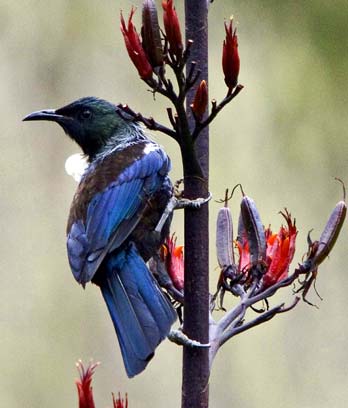Story summary
What is New Zealand flax?
New Zealand flax is a big plant that grows in swamps. It has long, sword-shaped leaves that grow in a fan shape, and tall branches of flowers. Tūī and other birds love to feed on the flower’s nectar.
There are two species:
- harakeke or swamp flax – its scientific name is Phormium tenax
- wharariki or mountain flax – its scientific name is Phormium cookianum.
New Zealand flax is not related to linen flax.
How Māori used flax
If you take a sharp shell and scrape it along a flax leaf, you will remove the green flesh and be left with strong, white fibres called muka.
Māori spun muka into thread and used it to weave warm clothes and make ropes, fishing nets and many other things. They also used the whole leaves to weave baskets and mats.
They used the gum from the base of the leaves to heal wounds and the roots to make a disinfectant.
Flax was so important to Māori that when they were told that it didn’t grow in England, they said, ‘How is it possible to live there without it?’
The flax trade
When Europeans first visited New Zealand in the 1700s, they saw that flax fibre would make good rope for their sailing ships. Māori began to barter muka for muskets and other European goods.
Flax mills and machines
In the 1860s, machines were invented to strip flax fibre from the leaves. This was much faster than doing it by hand. Flax mills were built, employing Māori and Europeans.
Working in a flax mill wasn’t much fun. It was loud and the workers got cold and wet washing the slimy fibre to clean it.
Gradually there was less demand for flax overseas. New Zealand factories began to make woolpacks, floor coverings and other items from flax. The last flax factory of this kind closed in 1985.
New uses for flax
Today, flax is used to make a new range of products, including high-quality paper. The gel from the base of the leaves is used to make face-creams. One day flax fibre might be mixed with wood or glass fibre to make building materials and furniture.





